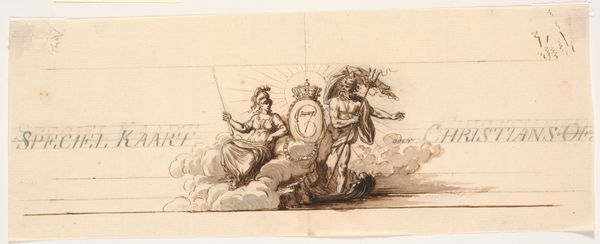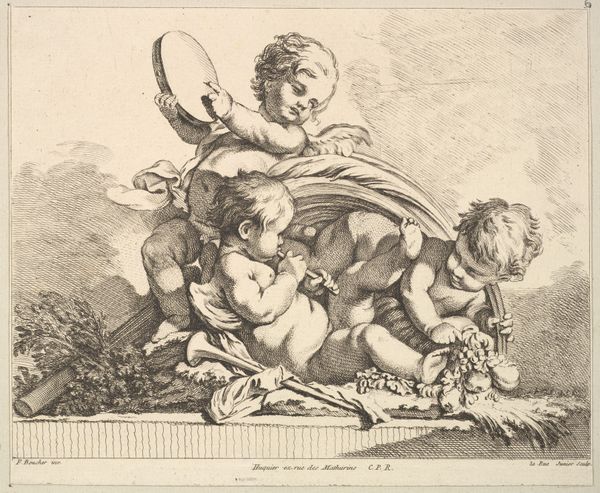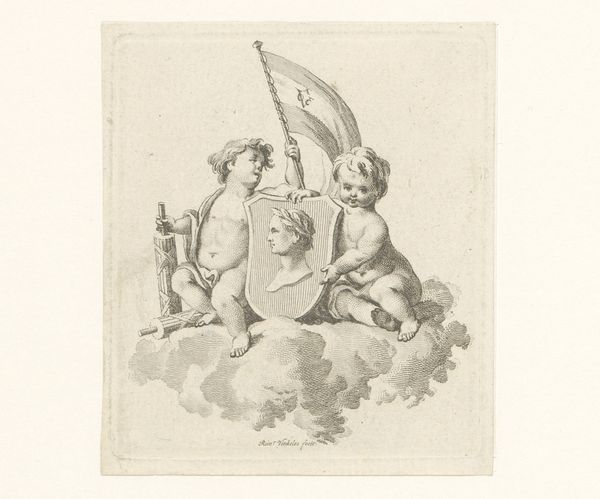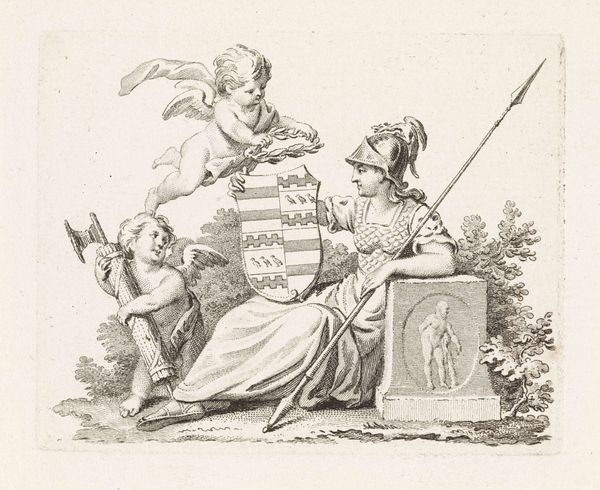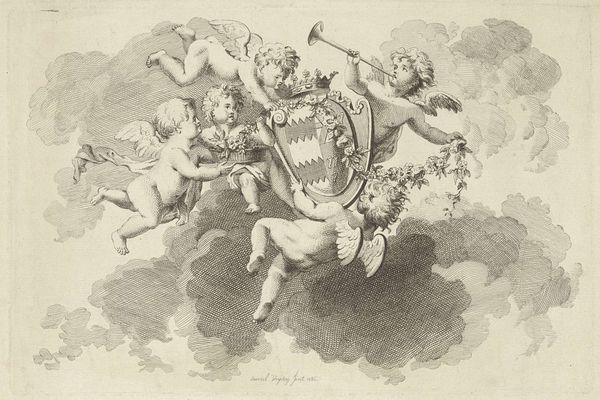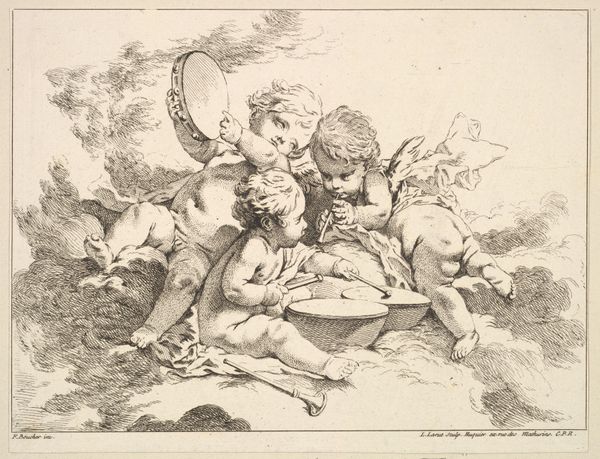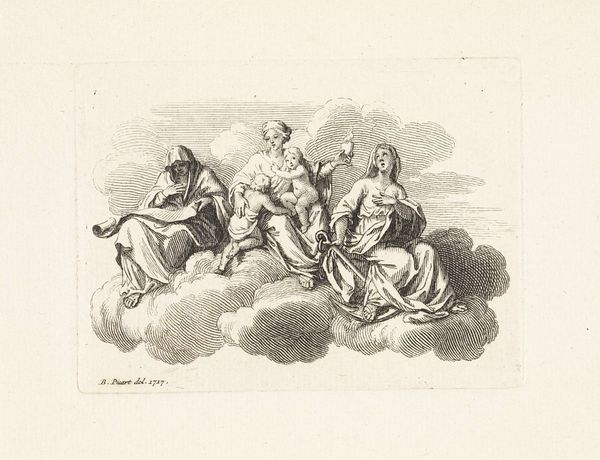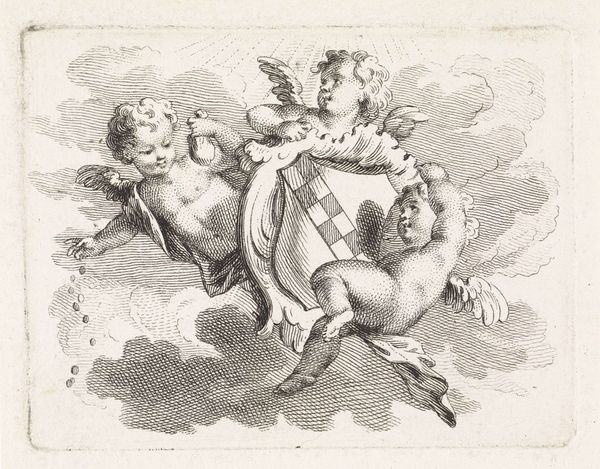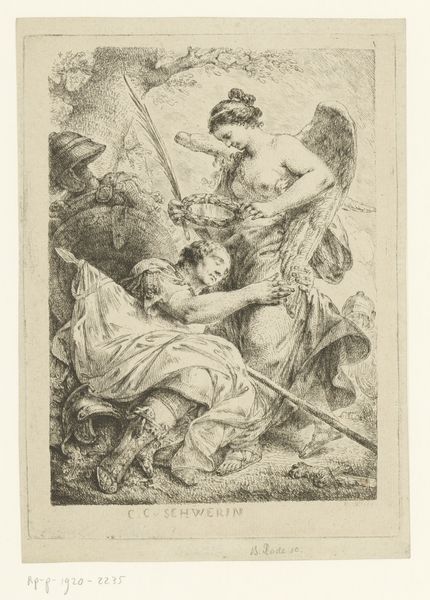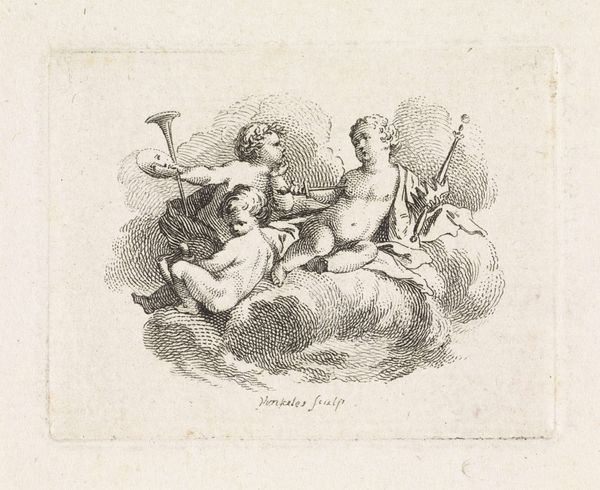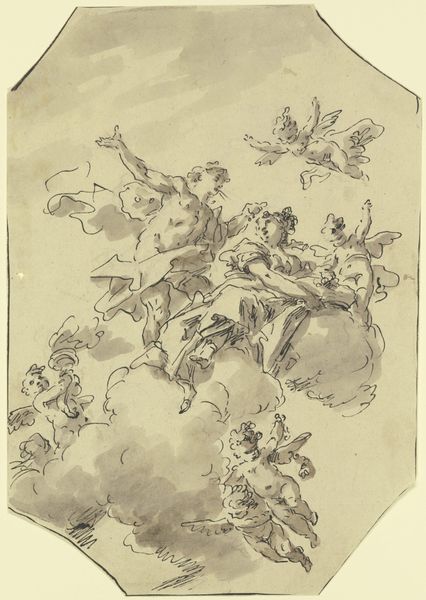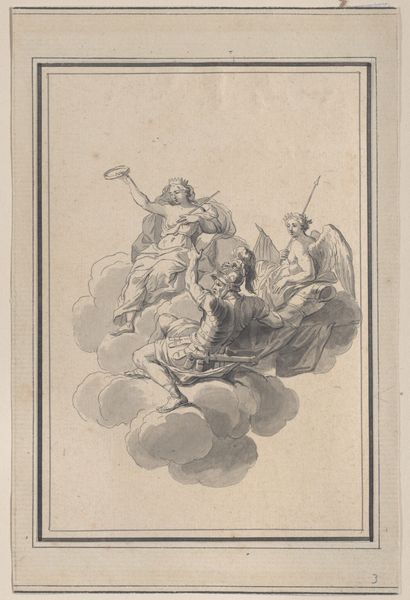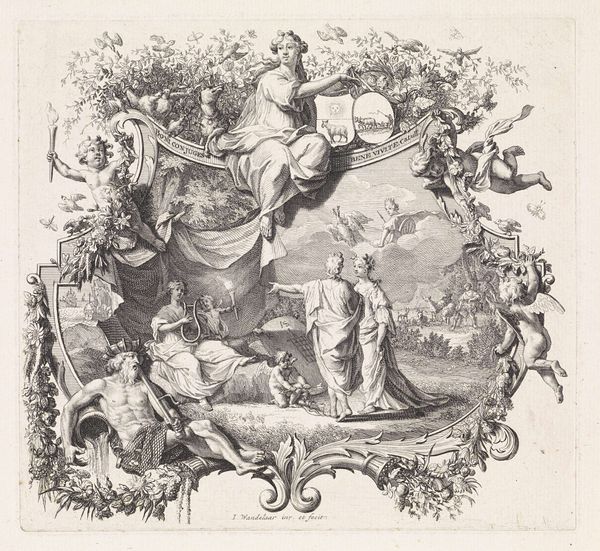
Vignet met de familiewapens van Van Baerdwyck en mogelijk Rombout 1751 - 1816
0:00
0:00
reiniervinkeles
Rijksmuseum
graphic-art, print, engraving
#
graphic-art
#
allegory
# print
#
classicism
#
history-painting
#
engraving
Dimensions: height 78 mm, width 87 mm
Copyright: Rijks Museum: Open Domain
Curator: This print, currently housed at the Rijksmuseum, is titled "Vignet met de familiewapens van Van Baerdwyck en mogelijk Rombout". It’s an engraving done by Reinier Vinkeles sometime between 1751 and 1816. Editor: It has a dreamy, almost ethereal quality. The fine lines of the engraving give it a lightness that contrasts with the serious subject matter of family crests. It feels poised between eras. Curator: Absolutely, and that tension is interesting to me. Looking through a feminist lens, I'm drawn to the female figure presiding over the crest. Is she simply an allegorical figure, or is she a symbol of the family's matriarchal power, subtly shaping their identity and narrative? Considering art history, her garb very specifically speaks to classical female presentation in artwork as symbolic of a figure who can 'bear' the weight and status assigned by the crest. Editor: That’s a fascinating point. The classical allegorical figures, the cherubic figure with the trumpet…these were common tropes of the time, representing virtue, fame, or divine favor. The family would have used an image such as this for their correspondence, bookplates or formal displays of status and family. It speaks to a desire to align their family narrative with historical power. How would you explore the symbolic construction and meaning-making beyond simple historical record? Curator: Well, what about the figures flanking either side of the central crest and figure? On the right we have monstrous and bestial caricatures, that introduce some dissonance to what otherwise might read as uncritical hagiography. Are these critical perspectives added in for wit, or some darker impulse? Do they symbolize enemies overcome or internal struggles within the families represented? What impact might something such as institutional politics, personal family dynamics, or other cultural issues play in these considerations? Editor: Right, that's critical because by examining its historical moment, and those details, we understand this image functioned as a visual representation of power, lineage and aspiration. To own an image such as this communicated wealth, education, taste, all wrapped into these symbols. Curator: The politics embedded in family crests often elide crucial details, specifically through historical vantage point; and focusing too intently on the literal runs the risk of missing its performative nature. But, by engaging the context of class and gender representation, and bringing critical awareness to otherwise commonplace depictions, we open broader perspectives. Editor: Yes, I’d agree; and for me, contextualizing it within its historical and cultural moment unlocks layers of meaning. It's more than just an attractive, formal engraving, but an embodiment of the social values, and often the contradictions, of its time.
Comments
No comments
Be the first to comment and join the conversation on the ultimate creative platform.
